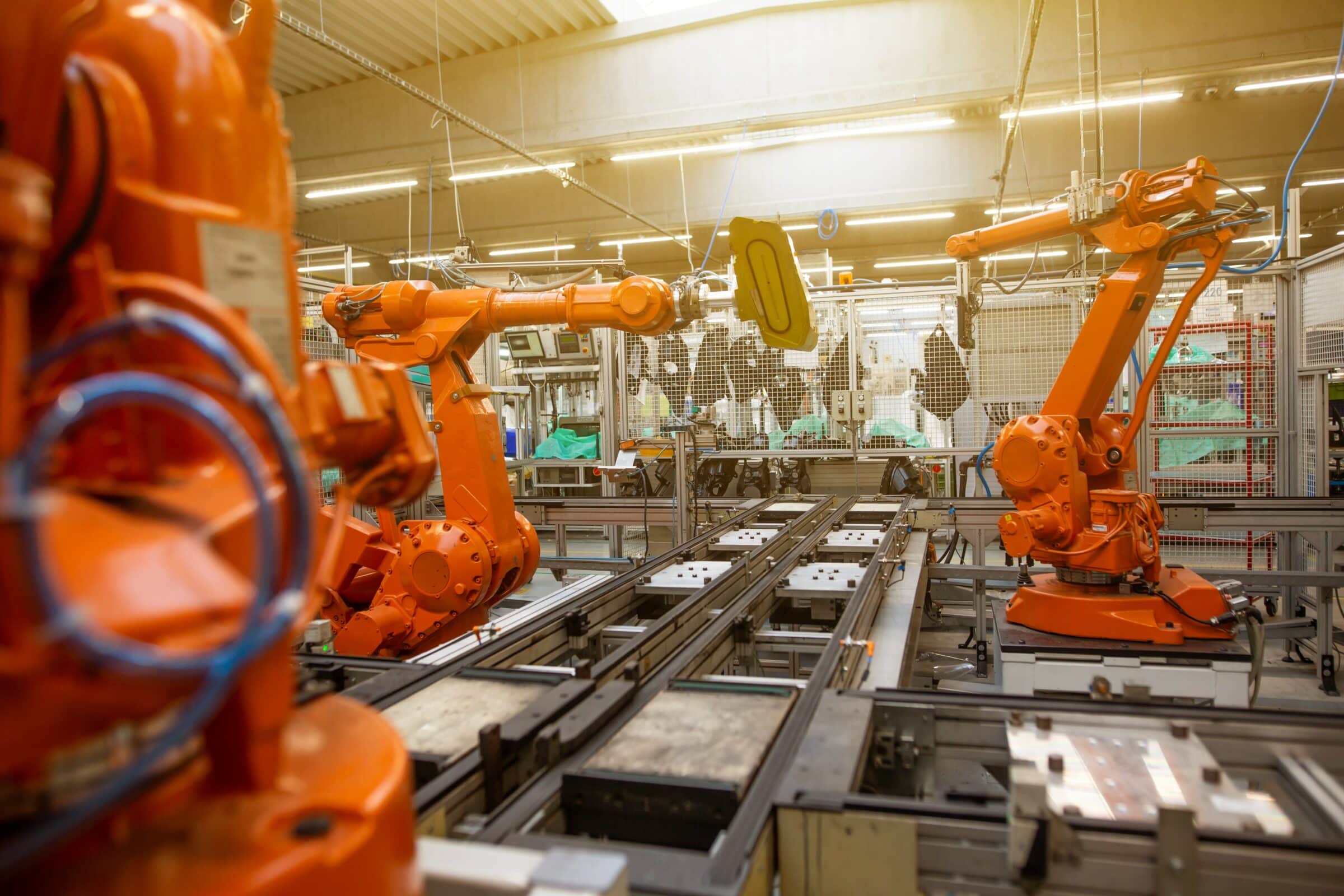Real-time operating systems (RTOS) are the hidden yet powerful core behind the seamless function of many embedded systems within the Internet of Things (IoT).
As we increasingly rely on these swift, responsive technologies, it becomes essential to understand how real-time operating systems work.
Unlike general-purpose operating systems, an RTOS prioritises time-sensitive tasks to offer deterministic, predictable behaviour—critical in applications where timing is key.
From medical equipment to air traffic control systems, the influence and application of real-time operating systems are broad and multifaceted.
This blog post aims to shed light on the intricate workings of RTOS, underlining its pivotal role in propelling IoT into a new era of connectivity and efficiency.
What Is A Real-Time Operating System?
A real-time operating system (RTOS) is a specific type of operating system designed to manage multiple requests and processes within a set, predefined time constraint.
Unlike standard operating systems, an RTOS prioritises tasks based on their urgency rather than their availability. This makes them an essential component in systems where timing is critical, such as aviation software, industrial control systems, or medical equipment.
They ensure system responses are both predictable and quick, adhering to strict deadlines to prevent potentially disastrous consequences.
The key characteristics that define every RTOS are:
- High performance: An RTOS must be able to handle tasks within a specific time frame, meeting the deadlines with minimal delay.
- Determinism: Repeated inputs in the system must result in the same output.
- Priority-based scheduling: Tasks are assigned a priority level, and the RTOS ensures that high-priority tasks are executed first.
- Small footprint: A ROTS weighs significantly less than a regular OS.
- Safety and security: It is integral for an RTOS to have a high level of security and reliable safety features.
- Timing information: RTOS must provide accurate timing information to ensure the correct execution of time-critical tasks.
Real-Time Operating System Vs Operating System (GPOS)
A real-time operating system and a general-purpose operating system (GPOS) exhibit fundamental differences in their design, functionality, and application.
While a GPOS, such as Windows or Linux (https://www.linux.org/, 2023), is developed with the versatility to support a variety of applications and user interfaces, its real-time counterpart is specifically designed for time-critical applications.
The distinguishing feature of an RTOS lies in its deterministic nature, where it consistently meets specific deadlines for task completion, resulting in predictable system behaviour.
Conversely, a GPOS employs a non-deterministic scheduling algorithm, which favours fairness over real-time constraints, making it unsuitable for time-sensitive applications.
Hence, the choice between an RTOS and a GPOS typically hinges on the specific needs of the task at hand, be it the need for real-time precision or versatility.
Real-Time Operating System Uses
Real-time operating systems find extensive application across a spectrum of industries due to their reliable, efficient, and timely processing capabilities.
In the realm of air traffic control, the importance of RTOS cannot be overstated. The system’s ability to handle multiple data streams and prioritise tasks based on urgency ensures precise control of air traffic, thereby averting potential disasters.
Personal computers (PCs) also leverage RTOS, particularly in the gaming industry, where the requirement for real-time interaction and high-performance graphics is paramount. RTOS provides the needed speed and responsiveness, delivering a seamless and immersive gaming experience.
In digital cameras, an RTOS plays a crucial role in managing complex functionalities such as auto-focus, image processing, display rendering, and memory management. The efficiency and speed at which an RTOS manages these tasks results in high-quality images and videos.
The field of medical technology greatly benefits from the application of RTOS. Life-saving equipment such as ventilators, pacemakers, and infusion pumps rely on the deterministic behaviour of RTOS to function correctly and timely, thereby ensuring patient safety.
In the automotive industry, RTOS has redefined safety standards. Anti-lock braking systems (ABS) and airbags, both of which are critical safety features, are controlled by embedded systems running on RTOS. These systems require immediate and predictable responses to ensure the safety of vehicle occupants.
Lastly, in the realm of security, RTOS delivers unparalleled performance. Surveillance systems and home security devices, for instance, use RTOS to provide real-time monitoring and responses, offering users a robust and reliable security solution.
The Distinct Types of RTOS
Real-time operating systems can be subdivided into two types – soft and hard.
Soft RTOSes are designed to function within a few hundred milliseconds. These systems typically have a larger file size and act less predictably during their peak load capacity.
Soft real-time operating systems are usually used in use cases when time-based executions are important, such as cameras, smartphones, and PCs.
Hard RTOSes, on the other hand, boast ultralow latency and can execute tasks within a few microseconds. These systems have small to medium-sized file data sizes and are suitable for applications where timing is of critical importance, such as military equipment, industrial control systems and aeroplane sensors.
The Role of IoT in ROTS
Understanding the intricate workings of a real-time operating system is key to appreciating its role in producing time-critical results.
An RTOS works on the fundamental principle of priority scheduling, where tasks are assigned different priority levels. When a high-priority task comes into play, the RTOS momentarily suspends lower-priority tasks, allowing the more critical task to execute promptly.
Notably, an RTOS relies on a dedicated scheduler to ensure that the system’s resources, including the processor, memory, and peripherals, are efficiently allocated to conduct the scheduled tasks within the defined deadlines.
The Internet of Things (IoT) has significantly reshaped how RTOSes function. IoT devices are invariably interconnected, collecting, and sharing data in real-time.
An RTOS provides the perfect environment for these devices to operate by prioritising tasks based on their urgency and ensuring timely execution.
IoT has made it possible for devices spread across vast geographical distances to share real-time data and perform coordinated tasks.
For example, in a smart city landscape, IoT devices can share real-time traffic data, helping to optimise traffic control systems.
This symbiosis between IoT and real-time operating systems is fundamental to the growth of smart technology applications that require a real-time, reliable, and efficient operating system.
How The World Of Real-Time Operating Systems Is Evolving
As technology continues to develop and advance at a rapid pace, RTOSes are adapting to cater to increasingly complex use cases and achieve higher levels of performance.
These consistent evolutions of the operating systems have led to innovative new features such as advanced caching mechanisms, parallel task handling, and new scheduling algorithms, in turn leading to the continual phasing out of legacy systems.
Additionally, RTOSes are becoming increasingly lightweight to cater to the growing demand for embedded systems in various industries.
Below are three ways in which the world of real-time operating systems is evolving:
New Hardware
The evolution of hardware technology is propelling significant advancements in the world of real-time operating systems.
The advent of powerful, compact, and energy-efficient hardware components has not only fostered the development of more complex and reliable RTOSes but also expanded the boundaries of their application.
For instance, the emergence of multi-core processors has enhanced the ability of RTOS to perform concurrent tasks, thereby boosting system responsiveness and performance.
Similarly, advancements in memory technology have facilitated the development of lightweight RTOS capable of operating on devices with limited resources, such as Internet of Things (IoT) sensors.
Whatr’s more, the rise of GPU-accelerated computing is paving the way for RTOS applications in areas demanding high-performance graphics and computational capabilities, such as autonomous vehicles and augmented reality systems.
New Methodologies
New methodologies are revolutionising the way real-time operating systems work.
The increasing incorporation of machine learning algorithms into RTOS design represents a transformative change, enabling these systems to intelligently adapt to their environment and make autonomous decisions based on real-time data.
Moreover, the rise of cloud computing is enhancing the capacity of real-time operating systems, allowing them to leverage vast computational resources and data storage facilities in real-time.
This fusion of innovative methodologies and RTOS is pushing the boundaries of real-time response and paving the way for innovative applications in sectors such as automotive, healthcare, and telecommunications.
Hybrid Systems
Hybrid real-time operating systems represent the convergence of the best attributes of hard and soft real-time systems, optimising both responsiveness and robustness (https://www.researchgate.net/publication/282978300_Hybrid_real-time_operating_systems_deployment_of_critical_FreeRTOS_features_on_FPGA, 2023).
These systems provide the determinism of hard real-time systems while maintaining the flexibility of soft real-time systems, making them an ideal choice for applications that require the immediate execution of high-priority tasks, yet still benefit from the handling of less urgent tasks.
Hybrid RTOS are employed in diverse fields, including aerospace, telecommunications, and industrial automation, where their ability to effectively manage multiple tasks in a rapidly changing environment is paramount.
Unlocking New IoT Opportunities with Caburn Telecom
Thank you for reading our post on real-time operating systems.
Caburn Telecom is an industry leader in innovative IoT solutions, offering managed connectivity services that enable real-time data transfer and reliable communication between devices.
With our global IoT connectivity solutions, businesses can unlock new opportunities in smart technology applications by leveraging the power of real-time operating systems.
Contact us today to see how we can help you harness the full potential of real-time operating systems in your industry. We look forward to hearing from you.




